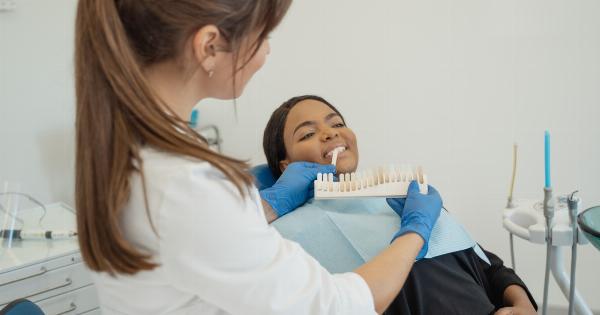Prostatitis is an inflammation of the prostate gland, which is located between the bladder and the penis in males.
The condition affects men of all ages and can cause a range of symptoms, including pain, discomfort, urinary problems, and sexual dysfunction. Prostatitis can be classified into several types, with bacterial and non-bacterial being the most common.
This comprehensive guide will help you understand the symptoms, causes, diagnosis, and treatment options for prostatitis, so you can take charge of your health and seek the right treatment.
Symptoms of Prostatitis
The symptoms of prostatitis can vary depending on the type of prostatitis you have. Here are some of the most common symptoms:.
- Pain and discomfort in the pelvic area, lower back, and/or groin
- Urinary problems, such as frequent urination, urgency, and difficulty urinating
- Burning or painful urination
- Blood in the urine
- Difficulty achieving and maintaining an erection
- Painful ejaculation
- Flu-like symptoms, such as fever, chills, and fatigue
If you experience any of these symptoms, it’s important to see a doctor for an accurate diagnosis and treatment.
Causes of Prostatitis
The causes of prostatitis are not always clear, but some factors that may contribute to the condition include:.
- Bacterial infection – This is the most common cause of acute bacterial prostatitis. The infection can spread to the prostate gland from the urinary tract or bloodstream, and can cause severe symptoms.
- Non-bacterial infection – This type of prostatitis is not caused by an infection, but by inflammation of the prostate gland. The inflammation can be caused by an autoimmune disorder, nerve damage, or other factors.
- Age – Prostatitis is more common in men over the age of 50, as the prostate gland tends to enlarge with age.
- Sexually transmitted infections (STIs) – Certain STIs, such as chlamydia and gonorrhea, can cause prostatitis.
- Dehydration – Not drinking enough fluids can lead to a buildup of bacteria in the urinary tract, which can affect the prostate gland.
Diagnosing Prostatitis
Diagnosing prostatitis can be challenging, as the symptoms can be similar to other conditions, such as urinary tract infections or prostate cancer. Here are some of the tests that your doctor may perform:.
- Physical exam – Your doctor will examine your prostate gland for signs of swelling, tenderness, or other abnormalities.
- Urinalysis – This test checks for bacteria, blood, or other substances in your urine.
- Prostate specific antigen (PSA) test – This blood test can help detect prostate cancer, which can cause similar symptoms to prostatitis.
- Prostate massage – In some cases, your doctor may perform a prostate massage to collect a sample of prostatic fluid for analysis.
- Cystoscopy – This procedure involves inserting a small camera into the urethra to examine the bladder and prostate gland.
Based on the results of these tests, your doctor may diagnose you with acute bacterial prostatitis, chronic bacterial prostatitis, chronic non-bacterial prostatitis, or asymptomatic prostatitis.
Treatment Options for Prostatitis
The treatment for prostatitis will depend on the type and severity of the condition. Here are some of the most common treatment options:.
- Antibiotics – If you have acute bacterial prostatitis, your doctor will prescribe antibiotics to kill the bacteria causing the infection. You may need to take the antibiotics for several weeks.
- Pain relievers – Over-the-counter pain relievers, such as ibuprofen or acetaminophen, can help relieve pain and discomfort associated with prostatitis.
- Alpha blockers – These medications can help relax the muscles in the prostate gland and improve urine flow.
- Anti-inflammatory medications – If you have chronic non-bacterial prostatitis, your doctor may prescribe anti-inflammatory medications to reduce inflammation and relieve pain.
- Physical therapy – In some cases, physical therapy or biofeedback may be recommended to help relax the pelvic muscles and improve urinary function.
In addition to these treatments, your doctor may recommend lifestyle changes, such as drinking more fluids, avoiding caffeine and alcohol, and practicing good hygiene.
Preventing Prostatitis
While there is no surefire way to prevent prostatitis, there are some steps you can take to reduce your risk:.
- Practice safe sex – Using condoms and getting regular STI screenings can lower your risk of developing prostatitis from an STI.
- Stay hydrated – Drinking plenty of fluids can help flush bacteria out of the urinary tract and prevent infections.
- Practice good hygiene – Clean your genital area before and after sex, and wipe front to back after bowel movements to avoid spreading bacteria.
- Avoid holding in urine – Make sure to urinate when you feel the urge to avoid bacteria buildup in the urinary tract.
Conclusion
Prostatitis is a common condition that can cause pain, discomfort, and other urinary symptoms. If you experience any of these symptoms, it’s important to see a doctor for an accurate diagnosis and appropriate treatment.
By understanding the causes, symptoms, and treatment options for prostatitis, you can take steps to manage the condition and improve your overall health and wellbeing.































